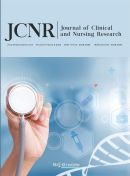Abstract
Objective: To explore the clinical effect of applying the pre-excitation regimen in the treatment of patients with refractory relapsed acute non-lymphocytic leukemia (ANLL). Methods: This research work was carried out in our hospital (Shaanxi Provincial People’s Hospital) from September 2021 to September 2022. A total of 50 cases were selected for this study, and all were given a pre-excitation treatment plan, mainly low-dose cytarabine, aclarithromycin, etoposide, granulocyte colony-stimulating factor, and more were implemented. The clinical intervention effect was then analyzed. Results: Among the 50 patients in this study, the results showed that the treatment was very effective for 22 cases, accounting for 44.00%; effective for 14 cases, accounting for 28.00%; and ineffective for 14 cases, accounting for 28.00%. The total rate of effectiveness was 72.00%. The hematopoietic system adverse reactions of the patients were mainly bone marrow suppression. All 50 patients had different degrees of blood count decline, among which some patients’ neutrophils were less than 0.5×109 /L. The median time was 7 days. Among them, 25 patients had infection problems, the incidence rate was 50.00%, the patient’s platelet count PLT < 20 × 109/L, and the median time was 10 days. At the same time, among the 50 patients in this study, 34 (68.00%) patients had symptoms such as loss of appetite, nausea, vomiting, and fatigue, 17 (34.00%) patients showed hair loss, mildly elevated transaminases were observed in 8 (16.00%) patients, and 11 (22.00%) patients had muscle soreness. Conclusion: In the treatment of patients with refractory complex acute non-lymphocytic leukemia, the application of pre-excitation regimen has a significant effect, which can improve the adverse symptoms of patients, reduce the incidence of adverse reactions, and promote the recovery of patients.
References
Tang W, 2021, Analysis of the Efficacy and Prognostic Factors of CCCG-ALL-2015 Regimen in the Treatment of Children with T-ALL, dissertation, Chongqing Medical University.
Meng T, 2021, Clinical Study of Allo-HSCT and Decitabine Combined with CAG Regimen in the Treatment of ETP-ALL, dissertation, Soochow University.
Li X, 2020, A Preliminary Clinical Study of Multiple Myeloma and Non-Hodgkin Lymphoma with Specific T Lymphocytes Targeting Multiple Tumor-Associated Antigens, dissertation, Anhui Medical University.
Wang L, 2020, Analysis of Clinical Characteristics and Efficacy of Imatinib and Dasatinib in the Treatment of Children with Philadelphia Chromosome-Positive Acute Lymphoblastic Leukemia, dissertation, Guangzhou Medical University.
Zhang X, Wang L, Tang B, et al., 2020, Follow-Up Evaluation of 306 Cases of Acute Myeloid Leukemia and Acute Lymphoblastic Leukemia Treated with Unrelated Umbilical Cord Blood Transplantation Without Antithymocyte Globulin. China Tissue Engineering Research, 24(31): 4986–4993.
Lin Y, Zhang R, Chen R, 2020, Efficacy Observation of Low-Dose FCR Regimen in the Treatment of Elderly Patients with Non-High-Risk Chronic Lymphocytic Leukemia. Journal of Practical Oncology, 35(4): 341–348.
Lv M, Jiang E, He Y, et al., 2020, Comparison of the Efficacy of Autologous and Sibling Hematopoietic Stem Cell Transplantation in the Treatment of Ph+ Acute Lymphoblastic Leukemia. Chinese Journal of Hematology, 41(5): 373–378.
Gu S, Miao J, Shen H, et al., 2020, Expression of Long Non-Coding RNA Lymphocytic Leukemia Deletion Gene 1 in Esophageal Squamous Cell Carcinoma and Its Effect on Cell Proliferation, Migration and Invasion. Practical Medical Journal, 36(21): 2911–2915.
Feng J, Zhang L, Cao X, et al., 2020, Similar Pediatric Regimens in the Treatment of Ph Chromosome-Negative Adolescents and Young Adults with Acute Lymphoblastic Leukemia: A Single-Center Retrospective Study. Chinese Journal of Hematology, 41(5): 399–404.
Long Y, Xu L, Tang X, 2020, Meta-Analysis of TKIs Combined with Autologous Hematopoietic Stem Cell Transplantation in the Treatment of Adult Feicheng Chromosome-Positive Acute Lymphoblastic Leukemia. Laboratory Medicine and Clinic, 17(12): 1694–1697.
Chen X, Lei T, Yu H, et al., 2020, Analysis of the Efficacy and Adverse Reactions of Ibrutinib in the Treatment of Chronic Lymphocytic Leukemia/Small Lymphocytic Lymphoma. World Latest Medical Information Digest (Continuous Electronic Journal), 20(53): 21–24 + 29.
Tang W, 2020, Analysis of the Relationship Between Adverse Reactions and Plasma Concentrations of High-Dose Methotrexate in the Treatment of Childhood Acute Lymphoblastic Leukemia. China Prescription Drugs, 18(12): 70–71.
Liu H, Huang Q, 2020, A Case of Non-Hodgkin Lymphoma After Remission of Acute Lymphoblastic Leukemia. China Rural Medicine, 27(19): 38–39.
Zhou Q, Xu F, Wen J, et al., 2020, Influence of Non-Medical Factors on the Standardization of Diagnosis and Treatment and Prognosis of Elderly Acute Myeloid Leukemia. World Latest Medical Information Digest (Continuous Electronic Journal), 20(58): 25–28.
Yang Y, 2020, The Clinical Significance of Different Transcripts of BCR/ABL in Ph-Positive B-Lineage Acute Lymphoblastic Leukemia in the era of TKI therapy and Its Transcript Evolution During Relapse, dissertation, Shanxi Medical University.
